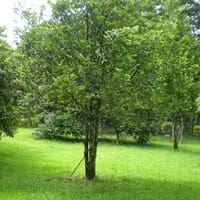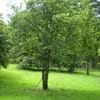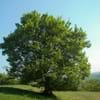Life Span
Perennial
Perennial
Origin
Central Asia, Eastern Europe, Europe, Nepal, Southern Asia, Southern Europe
North America, Canada, Mexico
Types
Not Available
Bigleaf hydrangea, Hortensia, Smooth hydrangea, Oakleaf hydrangea, Annabelle
Habitat
Cold Regions, Hills, Hillside
Forest edges, Hillside, Woods
USDA Hardiness Zone
9-11
Not Available
Sunset Zone
1a, 1b, 2a, 2b, 3a, 3b, 4, 5, 6, 7, 8, 9, 14, 15, 16, 17, 18, 19, 20, 21
1a, 1b, 2a, 2b, 3a, 3b, 4, 5, 6, 7, 8, 9, 10, 11, 14, 15, 16, 17, 18, 19, 20, 21, 22, 23
Habit
Oval or Rounded
Upright/Erect
Flower Color
Not Available
Blue, Dark Purple, Light Purple, Red, White
Flower Color Modifier
Bicolor
Bicolor
Fruit Color
Green, Brown
Not Available
Leaf Color in Spring
Green, Copper
Green, Light Green, Blue Green, Gray Green
Leaf Color in Summer
Dark Green
Light Green
Leaf Color in Fall
Green
Red, Green, Orange, Blue Green, Gray Green, Bronze
Leaf Color in Winter
Green
Tan, Sandy Brown
Plant Season
All year
Spring, Summer, Fall, Winter
Sunlight
Full Sun
Full Sun, Partial Sun
Type of Soil
Clay, Loam, Sand
Clay, Loam, Sand
The pH of Soil
Acidic, Neutral
Acidic, Neutral, Alkaline
Soil Drainage
Well drained
Average
Bloom Time
Late Spring, Early Summer
Early Summer, Summer, Late Summer
Tolerances
Not Available
Pollution, Soil Compaction
Where to Plant?
Ground
Container, Ground
How to Plant?
Budding, Seedlings
Seedlings, Stem Planting
Plant Maintenance
Medium
Medium
Watering Requirements
Requires watering in the growing season, Water Deeply, Water when top layer of soil becomes dry
Not Available
In Summer
Lots of watering
Drought Tolerant, Average Water
In Spring
Moderate
Moderate
In Winter
Average Water
Average Water
Soil pH
Acidic, Neutral
Not Available
Soil Type
Clay, Loam, Sand
Not Available
Soil Drainage Capacity
Well drained
Not Available
Sun Exposure
Partial Sun, Partial shade
Not Available
Pruning
In Early Autumn, Prune to stimulate growth, Remove dead leaves
Remove damaged leaves, Remove dead branches, Remove dead leaves
Fertilizers
fertilize in spring, Nitrogen
All-Purpose Liquid Fertilizer
Pests and Diseases
Anthracnose, Armillaria mellea, Blight, Caterpillars, Crown gall, Crown rot, fungus, Powdery mildew, Red blotch
Red blotch
Plant Tolerance
Drought, Frost
Pollution, Soil Compaction
Flower Petal Number
Single
Single
Fragrant Bark/Stem
Yes
No
Foliage Texture
Medium
Fine
Foliage Sheen
Glossy
Not Available
Invasive
Sometimes
Not Available
Self-Sowing
No
Not Available
Attracts
Aphids, Bees, Beetles, Caterpillar, Small mammals
Bees, Flies
Allergy
Abdominal distension, flushing of face, hallucinations, Headache, Pollen
Chest tightness, Diarrhea, Dizziness, Nausea, Vomiting
Aesthetic Uses
Not Used For Aesthetic Purpose
Not Available
Beauty Benefits
Good for skin and hair
Not Available
Edible Uses
Yes
Not Available
Environmental Uses
Absorbs greenhouse gases, Absorbs huge amounts of CO2, Air purification, Amazing growth rate, Erosion control, Food for birds, Food for insects, Forms dense stands, Nesting sites for birds, Prevent Soil Erosion, Shadow Tree, Shelter for wildlife, Windbreak
Air purification
Medicinal Uses
Anemia, anti-cancer, Antispasmodic, Asthma, Diarrhea, Healing, Stomach spasms, Thoat infection
Fever, Kidney problems, Urinary tract problems
Part of Plant Used
Fruits, Seeds
Flowers, Root
Other Uses
Making deodorants, Oil is used for aromatherapy, Oil is used in mosquito repellents, Used as a laxative, Used for its medicinal properties, Used for making soaps, Used in biomass
Not Available
Used As Indoor Plant
No
Not Available
Used As Outdoor Plant
Yes
Yes
Garden Design
Container, Groundcover
Not Available
Botanical Name
Myristica fragrans
PANICUM virgatum 'Northwind'
Common Name
Nutmeg
Northwind Switchgrass, Switchgrass
In German
Muskatnuss
Hortensie
In French
noix de muscade
Hortensia
In Spanish
nuez moscada
Hortensia
In Greek
μοσχοκάρυδο
υδραγεία
In Portuguese
noz-moscada
Hortênsia
In Polish
gałka muszkatołowa
Hortensja
Phylum
Magnoliophyta
Not Available
Class
Magnoliopsida
Not Available
Order
Magnoliales
Not Available
Family
Poaceae
Not Available
Genus
Myristica
Not Available
Clade
Angiosperms, Monocots
Not Available
Tribe
Myrteae
Not Available
Subfamily
Myrtoideae
Not Available
Number of Species
Not Available
Season and Care of Nutmeg and Northwind Switchgrass
Season and care of Nutmeg and Northwind Switchgrass is important to know. While considering everything about Nutmeg and Northwind Switchgrass Care, growing season is an essential factor. Nutmeg season is All year and Northwind Switchgrass season is All year. The type of soil for Nutmeg is Clay, Loam, Sand and for Northwind Switchgrass is Clay, Loam, Sand while the PH of soil for Nutmeg is Acidic, Neutral and for Northwind Switchgrass is Acidic, Neutral, Alkaline.
Nutmeg and Northwind Switchgrass Physical Information
Nutmeg and Northwind Switchgrass physical information is very important for comparison. Nutmeg height is 1,000.00 cm and width 1,220.00 cm whereas Northwind Switchgrass height is 150.00 cm and width 90.00 cm. The color specification of Nutmeg and Northwind Switchgrass are as follows:
Nutmeg flower color: Not Available
Nutmeg leaf color: Green and Copper
Northwind Switchgrass flower color: Blue, Dark Purple, Light Purple, Red and White
- Northwind Switchgrass leaf color: Green, Light Green, Blue Green and Gray Green
Care of Nutmeg and Northwind Switchgrass
Care of Nutmeg and Northwind Switchgrass include pruning, fertilizers, watering etc. Nutmeg pruning is done In Early Autumn, Prune to stimulate growth and Remove dead leaves and Northwind Switchgrass pruning is done Remove damaged leaves, Remove dead branches and Remove dead leaves. In summer Nutmeg needs Lots of watering and in winter, it needs Average Water. Whereas, in summer Northwind Switchgrass needs Drought Tolerant, Average Water and in winter, it needs Average Water.





